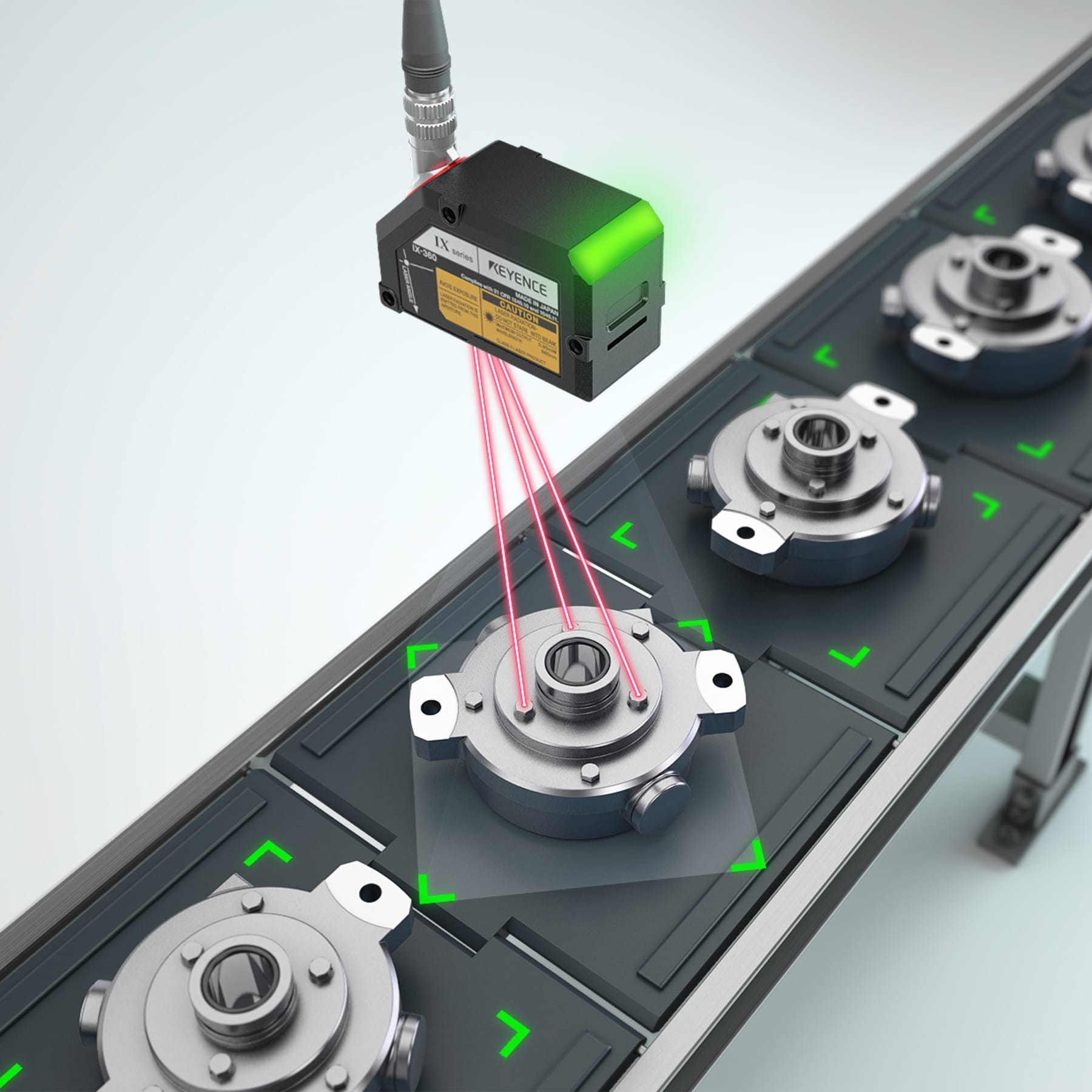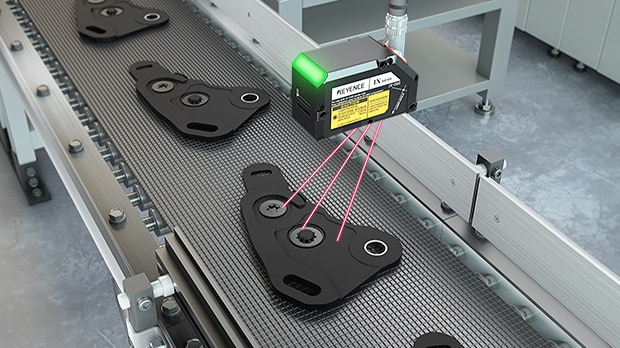
Image-Based Laser Sensor
IX series
Image-Based Laser Sensor IX series

Verify Differences by Checking Heights, Even with Misaligned or Low Contrast Targets

IX Series image-based laser sensors can measure height anywhere within the area. Camera-based image recognition allows the laser to detect the height of the target point even when workpieces are not perfectly aligned on the production line. The height of where the laser hits the target will vary if the target is tilted or if the target itself is different, but the IX Series can identify the difference in height against the reference. For example, in a parts assembly line, a single IX Series unit can not only check for the presence of parts, but also perform seating checks and other height-based inspections. Thanks to its ability to detect height differences, the IX Series is also free from false detections and errors in the presence of glare from glossy surfaces of metal parts or when the detection target point has the same colour as the background, offering stable automatic inline differentiation.
Features
Stable Height-Based Detection, Even with Low Contrast Targets

Front/back difference check with single-colour washers
Using a camera built into the sensor head, the IX Series recognises the locations of targets and measures the height and height differences of specified points. The ability to detect targets with low-contrast compared to the background-something that is not easy to do with conventional sensors-means stable detection is possible for a wide variety of applications.
Automatic Calibration for Misaligned and Tilted Targets

Bolt height difference checking
By combining a scanning laser with a camera, the IX Series can account for variations in a target's position and tilt during measurement. This eliminates the need for jigs or other costly mechanical fixtures.
Check for Both Component Presence and Correct Seating with a Single Device

Clip presence and seating check
A single IX Series sensor is all that is needed to perform inspections at multiple locations. Applications that required multiple conventional sensors and complicated calculations can now be solved with just a single device, greatly simplifying installation and integration.

